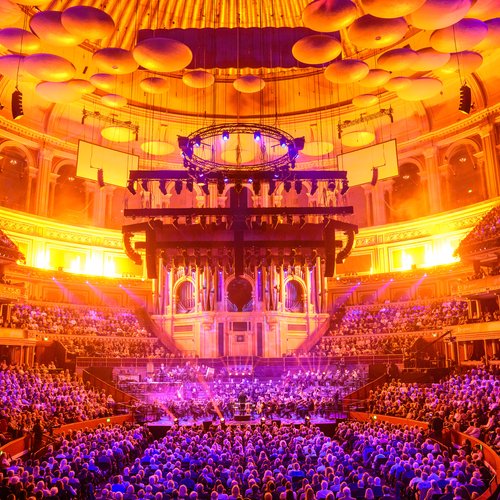10 calming pieces of classical music for your pet
31 October 2024, 19:59

The best lullaby for a cat
As Classic FM’s Pet Classics returns this fireworks season, we present the best music to keep your pets happy during the lights and bangs of Bonfire Night...
Listen to this article
Classical music has proved time and time again to be the perfect calming antidote for your furry, feathered, or scaly friend – with plenty of science to back this up. A recent 2020 study by The University of Sydney confirmed that “animals appear less stressed or anxious when exposed to classical music”.
With Bonfire Night on the horizon, we’re keeping creatures calm across the country with our annual Classic FM’s Pet Classics, hosted by Charlotte Hawkins at 5pm on Saturday 2 November and by Dan Walker at 5pm on Tuesday 5 November.
Here are just 10 of our favourite calming classics to keep your pets chilled out...
Read more: Classic FM’s Pet Classics returns in 2024 to relax pets during the fireworks
-
Mina - Elgar
Elgar’s last piece of light music was Mina, a work dedicated to his Cairn Terrier. The composition was originally written for piano in 1832, before being adapted for orchestra in 1934. The short piece portrays the composer’s beloved pet in a whimsical and affectionate nature.
This wasn’t the first time Elgar’s music had been influenced by a furry friend. The 11th variation of his orchestral work, Enigma Variations, is said to have been inspired by his friend’s pet, Dan the bulldog, falling into the River Rye.
Read more: These are the best pieces of classical music for your dog

Sir Edward Elgar : Mina. John Atkinson Grimshaw : Paintings.
-
Piano Concerto No.17 in G major - Mozart
Mozart’s pet starling could sing a theme from his 17th Piano Concerto. The animal was named Vogelstar, by the composer, which in German translates to the name of the bird species.
Considering how creative Mozart was, we’re slightly unimpressed with his naming skills, but very impressed by this tuneful concerto.

Bernstein - Mozart: Piano Concerto No. 17 2/3 VIDEO
-
Rêverie - Debussy
Debussy had several cats, and they were said to walk across his piano while he was working.
His biographers have commented on the flexibility his cats enjoyed in the composer’s home, with one saying “[Debussy’s cats] tiptoed, as usual, through a mass of papers on Debussy’s desk, while he was working.”, and another commenting that the cats were, “permitted to lounge solemnly on the desk and if they so wished, to sow disorder among the pencils”.
The Reverie is a dreamy, peaceful solo piano work, that will (probably) calm even the most disorderly of cats.
Listen on Global Player: Classic FM’s Music for Pets playlist

Rêverie, L. 68: Reverie
-
Träume: Wesendonck Lieder - Wagner
Wagner was a dog person. He had multiple of the furry friends over the years including Peps the Cavalier King Charles spaniel, and Russ the Newfoundland.
Peps is remembered for being a particularly musical mutt. According to Wagner’s biographer, the dog would sit by the piano and some passages would cause an occasional gentle tail wag, while passages in other keys might arouse an excited response. Wagner used the dog’s reaction to influence his music.

Wesendonck Lieder Nr. 5, Träume. Jessye Norman. Richard Wagner
-
Le Petit Jour: Les animaux modèles - Poulenc
Les animaux modèles is the final ballet written by Francis Poulenc. Translated simply as ‘The Model Animals’, the story is drawn from the French poet, La Fontaine’s, Fables.
The animals in this ballet include a bear, an ant, a grasshopper, a lion, and two roosters. This first movement, Petit jour (Dawn): très calme, makes a peaceful opening to this beastly ballet.

I. Le petit jour: Tres calme
-
Nocturne: Carmen Suite No. 2 - Bizet
This is one for our nocturnal buddies. The Carmen Suites are two orchestral works that were complied by Bizet’s friend, French composer Ernest Guiraud, based on Bizet’s 1875 opera, Carmen.
The full name of the orchestral aria is ‘Je dis que rien ne m’épouvante’, which translates to ‘I say that nothing frightens me’, and the aria is sung at night, under a full moon in the mountains.

Bizet: Carmen Suite No. 2 - Nocturne
-
The Swan: Carnival of the Animals - Saint-Saëns
Name a more iconic animal anthem than Saint-Saëns’ orchestral work, the Carnival of the Animals.
This humorous musical suite, made up of 14 movements, paints personalised symphonic portraits of a multitude of animals, from the fishes in the Aquarium, to the low and heavy Elephant, and bouncy Kangaroo.
The Swan is one of the calmest movements, and is one of the most famous works for cello.

Sheku Kanneh-Mason - The Swan (From Carnival of the Animals)
-
Symphony No.6 ‘Pastoral’, 2nd movement - Beethoven
The ‘Pastoral’ Symphony by Beethoven is a great example of how much the composer liked nature. The orchestral work was inspired by images such as shepherds, birds singing, and streams flowing.
The ‘Andante’ movement is subtitled ‘Scene by the brook’, and birds such as a nightingale, quail, and cuckoo are written into the score, portrayed by the woodwind family.

Beethoven's Symphony No. 6 "Pastoral", 2nd movement | conducted by Paavo Järvi
-
For I will Consider my Cat Jeoffry: Rejoice in the Lamb - Britten
This particular cat, Jeoffry, comes from the religious poem, Jubilate Agno by Christopher Smart. In the poem, the writer paints a picture of the actions carried out by the adoring animal, and how he “purrs in thankfulness when God tells him he’s a good Cat”.
Britten uses the organ to portray the cat’s movements, as he moves between “working up a stretch” and “sharpening his claws”.

For I will Consider my Cat Jeoffry
-
Promenade (Walking the Dog) - Gershwin
‘Promenade (Walking the Dog)’ is one of the songs written for the 1937 film, Shall We Dance, which starred Fred Astaire and Ginger Rogers. Unsurprisingly, this instrumental tune accompanies a dog walking scene.
While you may not want to use the *w-word* in front of your peppy pup, this tune will have any dog feeling cheerful and ready to accompany the musicians on this instrumental stroll.

George Gershwin | Promenade - Walking The Dog (1937) I Sebastian Manz & Friends










































